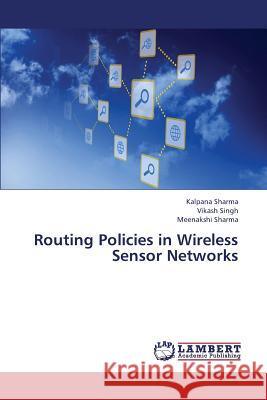Routing Policies in Wireless Sensor Networks » książka
Routing Policies in Wireless Sensor Networks
ISBN-13: 9783659414008 / Angielski / Miękka / 2013 / 68 str.
Wireless Sensor Networks (WSNs) have gained a lot of importance in the past few years. It has a tremendous application in the area of habitat monitoring, forest firing, medical etc. In most WSN applications the energy source is a battery and energy plays an important role in such applications. Therefore, preserving the energy of each node is an important goal during the development of a routing protocol for WSN. There are different routing protocols for WSN operate at minimum energy dissipation increasing the network lifetime. This book contains four chapters. Chapter 1 covers the general overview of Wireless Sensor Network, their design criteria, applications and advantages/disadvantages of sensor networks. The overview and classifications of routing techniques are described in Chapter 2. Chapter 3 contains the detailed description about LEACH routing protocol. It also focuses on the working and design methodology of various modified versions of LEACH. Chapter 4 presents a case study on the EEE LEACH protocol. Different performance metrics with respect to clustering protocols and vital parameters for routing have been considered.











